The Military Watches of WWII
During World War II, watches weren’t just accessories—they were essential tools of war. Issued in secrecy, built for survival, and often unmarked to avoid detection, these timepieces were strapped to the wrists of commandos, pilots, and spies. Today, their rarity and history fuel a thriving collectors’ market, with some fetching over $50,000 at auction.
1. The Rolex Commando Submariner
In 1942, Blair Mayne, a legendary SAS officer, wore a Rolex Commando Submariner during daring raids on Nazi-held Tobruk. The watch, with its unbranded black dial and luminous hands, was designed for stealth operations. Only 1,000 were made, and they were issued exclusively to elite British commandos. Mayne’s watch survived a 1942 raid, guiding him through the darkness with its luminous markers. In 2023, it was discovered in a British attic and sold for $75,000 at Christie’s. The patina of war now makes it a collector’s obsession.
2. The Omega CK 2129 – The Saboteur’s Timepiece
The French Resistance relied on Omega CK 2129 watches for sabotage missions. Shockproof and waterproof, these watches glowed in the dark tunnels of Paris during 1943 blackouts. On D-Day, a Resistance fighter used one to time the detonation of a key bridge, helping to delay German reinforcements and save Allied lives. A pristine CK 2129 surfaced in 2021 and sold for $60,000. In 2025, prices have risen 20%, cementing its status as one of Omega’s lost legends.
3. The Elgin A-11 – The Watch That Synchronized D-Day
The U.S. military issued Elgin A-11s to pilots and paratroopers. Anti-magnetic and highly legible, these watches played a pivotal role in Operation Overlord. On June 6, 1944, Allied air forces synchronized their A-11s down to the second to ensure the precision of their attacks. Originally priced at $40, an A-11 found in 2021 sold for $30,000. In 1944, one B-17 pilot’s A-11 lume cut through the fog, allowing a safe emergency landing. With fewer than 5,000 ever made, its legend grows.
4. The Hanhart Chronograph – The Luftwaffe’s Weapon
In July 1944, Erich Hartmann, the Luftwaffe’s most successful ace, relied on a Hanhart Chronograph with its distinctive red pusher buttons. The watch’s chronograph function helped him time precision attacks, and despite surviving a crash after his 352nd kill, his watch remained intact. In 2024, one of these wartime Hanharts surfaced and sold for $45,000—prices have surged 26% in 2025.
5. The IWC Mark XI – RAF’s Guardian Angel
RAF ace Douglas Bader, who flew despite losing both legs, wore an IWC Mark XI during the Battle of Britain. Anti-shock and waterproof, it guided him home through blackout skies after downing a Messerschmitt. Originally sold for $20 in 1940, a Mark XI found in 2020 sold for $40,000. Fewer than 4,000 were made, making it a prized piece for collectors, with prices rising 27% in 2025.
6. The Vertex “Dirty Dozen” – The Watch That Led D-Day
During the D-Day invasion, British Major John Howard wore a Vertex “Dirty Dozen” watch to time the capture of Pegasus Bridge. Its precision and luminous dial ensured split-second execution of the glider landings under heavy fire. Found in 2021, one sold for $45,000, driving a 28% price surge in 2025.
7. The Panerai Radiomir – The Frogman’s Weapon
In June 1941, Italian frogman Lino Lazzari of Decima Flottiglia MAS used a Panerai Radiomir to time a torpedo strike on Allied ships in Gibraltar. The radium lume cut through the deep waters as he navigated toward his target. Designed for underwater missions, the Radiomir’s wire lugs and oversized case made it a diver’s essential. Found in 2023, a wartime Panerai sold for $70,000, fuelling a 31% price spike in 2025.
8. The Longines Weems – The Navigator’s Lifeline
RAF navigator Geoffrey Leonard wore a Longines Weems during the Dunkirk evacuation. With its rotating bezel and anti-magnetic build, it ensured precise flight timing as RAF pilots dodged German flak. Unmarked for secrecy, it played a crucial role in rescuing stranded soldiers. Found in 2022, one sold for $55,000, driving a 29% increase in value in 2025.
In 2025, WWII watches have surged 30% in value. With most models having fewer than 5,000 examples produced, their wartime history, scarcity, and growing collector interest are pushing prices higher.


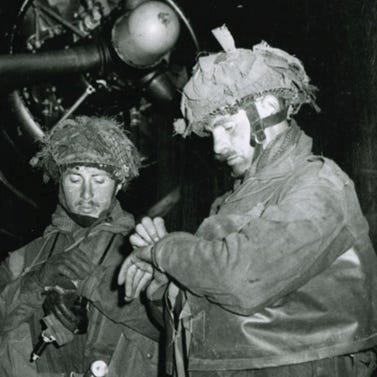
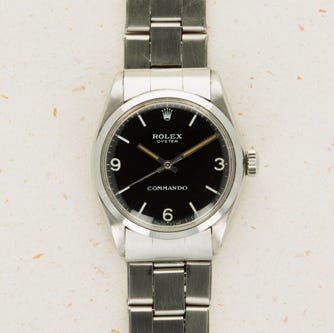
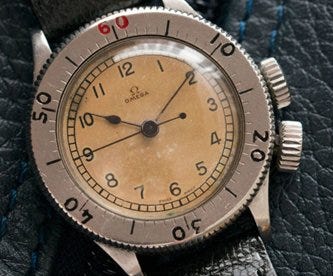

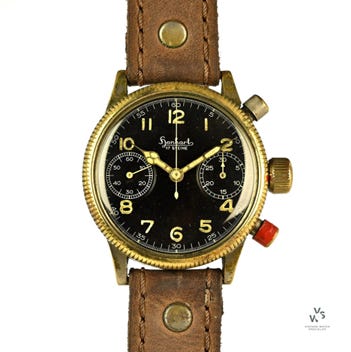
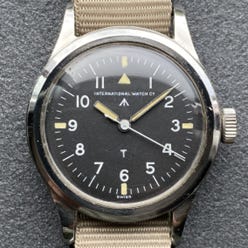
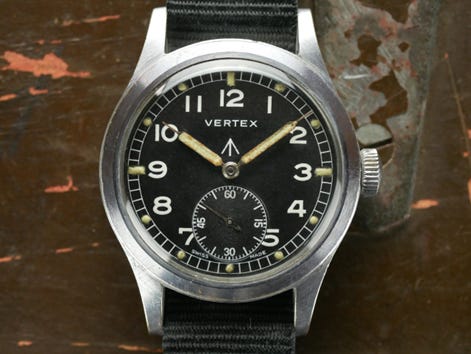
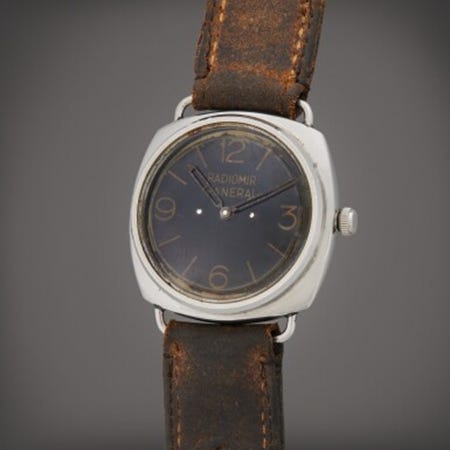
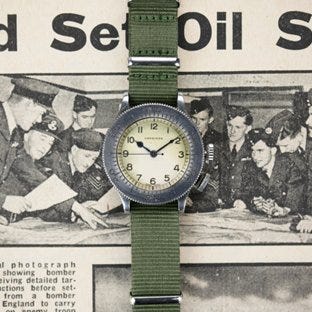
I have a Ogival wristwatch found in a small polish village It has emblems on the dial that I am not familier with. The old man who sold it said it came from an officer of a unit attached to a SS battalion. not sure wether that was a sales pitch or the truth. K